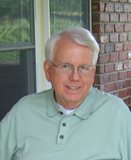Awardee Interviews | Biography: Jack Rowe
Jack Rowe

J.E. (Jack) Rowe is currently Research Professor of Physics at NC State University in the Department of Physics. Prior to returning full-time to NC State, he held the position of Deputy Director of the UNC Institute for Advanced Materials, Nanoscience and Technology where he was also an Adjunct Professor of Physics and Astronomy from late 2003 until early 2007. Previously for nearly 8 years he was a Senior Research Scientist (ST) with specialty in Solid State Physics at the Army Research Office (ARO) in Research Triangle Park, NC where he was in charge of Special Studies in Solid State Physics as a member of the Physics Sciences Directorate. While at ARO, he also was Associate Director of Biological Science Division at ARO for ~1 ½ years. Rowe was the most cited scientist in the U.S. Army (Over 5500 citations) and an Army Research Lab Fellow as well as a Distinguished Visiting Professor, Rutgers University. He was also North American Editor, Applied Surface Science, a member of the editorial board of JVST, an active member of AVS and the MSTG, and a fellow of APS, AVS and AAAS. Rowe has used novel approaches to photoemission spectroscopy and microscopy of semiconductor surfaces, spintronic materials, and complex oxides and transition-metal surfaces; he is using synchrotron radiation photo-emission studies to determine electronic structure and bonding of ultra-thin transition-metal oxides and silicates, as well as other oxide and oxy-nitride interfaces on Si(100) and Si(111). He has also studied model bimetallic catalyst systems, i.e., Pt, Pd, Au and Ir films on W(211) and Ir(111) with high resolution photoemission at the Brookhaven NSLS. In addition, Rowe has research interests in electronic structure and microscopy of conducting carbon, graphene, diamond, fullerene films and carbon nanotubes. In 1995 while at Bell Laboratories, Murray Hill, NJ, he discovered the Photon Channeling Effect in the far VUV and soft X ray spectral region where total external reflection does not apply. He demonstrated feasibility experiments in collaboration with N.V. Smith and developed a prototype scanning microscope to study nanoscale electronic properties of diamond films on Si(100), Au/GaAs interfaces, and surface segregation structure of SiGe alloys.